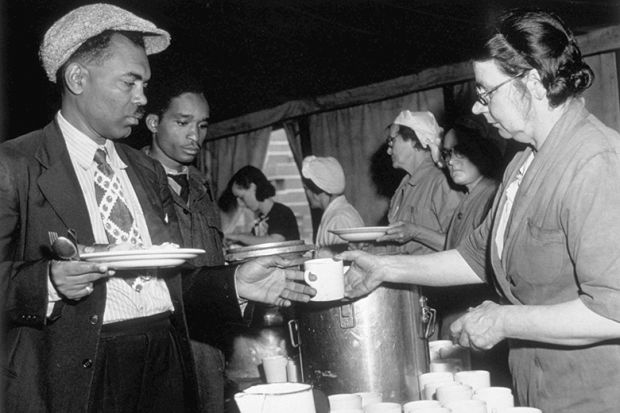Clair Wills aims to reconstruct the lives of first-generation migrants in Britain from the end of the 1940s to the latter 1960s. Rather than focusing simply upon those who arrived from the West Indies and South Asia, she also devotes attention to continental Europeans, including those who arrived at the end of the Second World War, and the Irish, who feature heavily, since her parents migrated from the country. In fact, she weaves the experiences of her own family (warts and all, especially in the chapter on “Scroungers”) into her narrative.
Her well-written, readable story evolves like a novel or film script with key characters. These include some of the most prominent immigrants to post-war Britain, such as Stuart Hall and V. S. Naipaul, while the television personalities Val Doonican, Terry Wogan and Eamonn Andrews all make cameo appearances. While the lives of some ethnic groups are richly developed, others do not receive such attention. Continental Europeans fade away after receiving some initial coverage, the Chinese are completely ignored, Africans rarely make appearances, while Maltese and Cypriots play the role of caricatures, never developing into real characters.
One reason for the focus on West Indians, South Asians and early post-war Europeans lies in one of the main sources for the volume: the sociological studies on these groups produced from the early 1950s onwards, from which Wills garners information and reuses interview material. The pioneering social scientists whom she quotes ignored the Chinese and the Cypriots because neither the government nor academics viewed them as problems. The Irish also received relatively little attention, but Wills’ deeper personal knowledge of this group allows her to bring them to life.
The main part of the volume (preceded by a section on journeys and followed by a conclusion on living between two cultures in the UK) is beautifully constructed, with a series of enticing chapter titles that serve as an entry point into the experiences of particular groups. Each suggests which community receives consideration. “Drinkers”, about the Irish, primarily focuses upon causes of drinking, especially loneliness. “Bachelors” tackles early all-male Asian households, but also deals with pub culture. The 13 chapters that form the core of the book progress both thematically and chronologically, and the narrative ends with the rise of Black Power and the anti-immigrant populism promoted by Enoch Powell.
The volume places the lives of migrants at the centre of the evolution of the UK during the period it covers. Wills tackles everything from the post-war housing crisis and austerity to the predominance of manual labour among the working population, the breakdown of “traditional” families and the rise of consumerism from an immigrant perspective. In addition, she deals with consequences of migration, including loss (especially of family, even if only temporarily), memory and homesickness, community and racism. Post-war migration has increasingly become part of the British story: this volume helps to cement its central role in British lives.
Panikos Panayi is professor of European history at De Montfort University.
Lovers and Strangers: An Immigrant History of Post-War Britain
By Clair Wills
Allen Lane, 464pp, £25.00
ISBN 9781846147166
Published 31 August 2017
Register to continue
Why register?
- Registration is free and only takes a moment
- Once registered, you can read 3 articles a month
- Sign up for our newsletter
Subscribe
Or subscribe for unlimited access to:
- Unlimited access to news, views, insights & reviews
- Digital editions
- Digital access to THE’s university and college rankings analysis
Already registered or a current subscriber?




